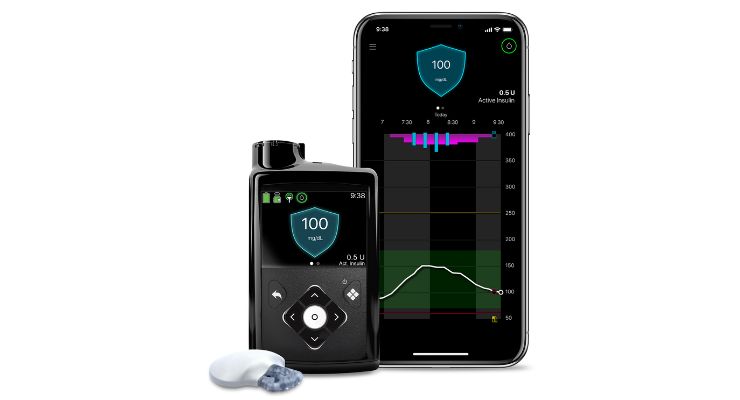Medtronic Muses on Diabetes Management Technologies
MPO recently spoke to Ali Dianaty, SVP of product innovation and operation at Medtronic Diabetes.
To get more information and insights about the technologies at the forefront of diabetes management, MPO recently spoke to Ali Dianaty, SVP of product innovation and operation at Medtronic Diabetes.
Sam Brusco: How does the recently EU-approved Simplera Sync CGM for MiniMed 780G fulfill unmet clinical needs for diabetes patients?
Ali Dianaty: Simplera Sync is an all-in-one, disposable, no fingerstick CGM that offers a simple, two-step insertion process with a discreet design without over tape. The CGM is integrated with our MiniMed 780G system, which automatically adjusts insulin every five minutes for users and delivers auto-corrections as needed, when an individual occasionally forgets to bolus or underestimates their carb count.
The ADAPT study, which compared the MiniMed 780G system to standard of care (MDI + CGM), showed those using the MiniMed 780G system experienced a Time in Range increase of 27% over MDI (6.6 more hours/day in target range) and 1.4% reduction in A1c sustained out to one year in both the control and cross-over group. We’re seeing growing bodies of clinical data that add to the proven benefits of our system. Despite the rapid adoption of CGM over the past decade, less than 30% of individuals on MDI therapy using a CGM achieve glycemic targets—highlighting a significant unmet need. With real-world data showing that on average MiniMed 780G system users are exceeding international guidelines for time in range and glycemic targets, it’s clear that advancements in technology are empowering more people achieve the best outcomes.

Brusco: Which continued unmet clinical needs does Medtronic plan to pursue in the near future?
Ali Dianaty: The topic of hyperglycemia often gets overshadowed by discussion of lows, but there’s an urgent need to ensure awareness around the short- and long-term health complications which can impact just about every part of the body including organs, blood vessels, eyes, and even the brain. The risk of these complications decreases with higher Time in Range and an A1c less than 7.7, so our goal is to enable more people to achieve tighter management without adding additional burden. With over 42 factors that impact blood sugar levels on any given day, it’s maddening to think about how much you’d have to do to stay on top of this. Fewer than one in five people with type 1 diabetes are achieving blood sugar goals established by the American Diabetes Association, so we sought to find an easier way for people to stay on top of their highs while not exhausting themselves in the same way they’d have to if they tried to do this manually.
That’s why we’ve designed the MiniMed 780G system’s algorithm to take on more of the decision-making diabetes management requires on a day-to-day basis, and it’s performing incredibly well. Our goal with diabetes management is to get people as close to normoglycemia as possible, said another way—to get as close to the glycemic levels of someone not living with diabetes. Healthy individuals without diabetes spend about 96% of their day with blood glucose levels between 70-140 mg/dL—this is even tighter than the current metric of Time in Range (70-180 mg/dL) that’s used to measure good control in someone living with type 1 diabetes. It’s great that we’ve been able to come to a point in the industry where we’re raising the bar even higher, and why wouldn’t we? The introduction of automated insulin delivery has made it easier for individuals to achieve tighter control with less effort and decrease long-term complications associated with hyperglycemia. If we can move more people to normoglycemia, then we absolutely should.
Brusco: What do you think will be the future (~5 years) for diabetes management technologies in general?
Ali Dianaty: Recently, we’ve seen increased recognition that automated insulin delivery systems should be an option for people living with diabetes, with recent NICE guidelines even recognizing that these systems “are more effective than standard care at maintaining blood glucose levels within a healthy range.” We truly believe that people living with diabetes deserve to have access to the best that diabetes technology, like the MiniMed 780G system, has to offer. So, in the future, we expect to see increased use of AID systems and increased consensus that these systems are the gold standard of care and should be available for all people living with diabetes.
Beyond increasing access to AID, we also see an increase in intuitive and easy-to-use technology for people living with diabetes. We’re using our extensive CareLink database, as well as our diverse real-world data from the MiniMed 780G system, which combined contains hundreds of millions of days of real-life patient data, to develop a best-in-class closed loop algorithm that we can leverage across all our insulin delivery platforms.
By optimizing the device experience through software, apps, and AI we’re not only in a position to deliver groundbreaking innovation, but also ensure we help our customers use those devices in a way that will help maximize their outcomes and ease the burden of living with diabetes.










